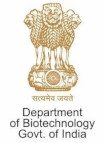Cell density overrides the effect of substrate stiffness on human mesenchymal stem cells' morphology and proliferation.
| Title | Cell density overrides the effect of substrate stiffness on human mesenchymal stem cells' morphology and proliferation. |
| Publication Type | Journal Article |
| Year of Publication | 2018 |
| Authors | Venugopal B, Mogha P, Dhawan J, Majumder A |
| Journal | Biomater Sci |
| Volume | 6 |
| Issue | 5 |
| Pagination | 1109-1119 |
| Date Published | 2018 May 01 |
| ISSN | 2047-4849 |
| Abstract | The effect of substrate stiffness on the cellular morphology, proliferation, and differentiation of human mesenchymal stem cells (hMSCs) has been extensively researched and well established. However, the majority of these studies are done with a low seeding density where cell to cell interactions do not play a significant role. While these conditions permit an analysis of cell-substratum interactions at the single cell level, such a model system fails to capture a critical aspect of the cellular micro-environment in vivo, i.e. the cell-cell interaction via matrix deformation (i.e., strain). To address this question, we seeded hMSCs on soft poly-acrylamide (PAA) gels, at a seeding density that permits cells to be mechanically interacting via the underlying substrate. We found that as the intercellular distance decreases with the increasing seeding density, cellular sensitivity towards the substrate rigidity becomes significantly diminished. With the increasing seeding density, the cell spread area increased on a soft substrate (500 Pa) but reduced on an even slightly stiffer substrate (2 kPa) as well as on glass making them indistinguishable at a high seeding density. Not only in terms of cell spread area but also at a high seeding density, cells formed mature focal adhesions and prominent stress fibres on a soft substrate similar to that of the cells being cultured on a stiff substrate. The decreased intercellular distance also influenced the proliferation rate of the cells: higher seeding density on the soft substrate showed cell cycle progression similar to that of the cells on glass substrates. In summary, this paper demonstrates how the effect of substrate rigidity on the cell morphology and fate is a function of inter-cellular distance when seeded on a soft substrate. Our AFM data suggest that such changes happen due to local strain stiffening of the soft PAA gel, an effect that has been rarely reported in the literature so far. |
| DOI | 10.1039/c7bm00853h |
| Alternate Journal | Biomater Sci |
| PubMed ID | 29528341 |
| PubMed Central ID | PMC5933002 |

